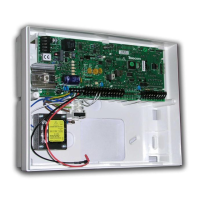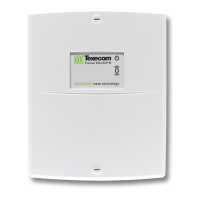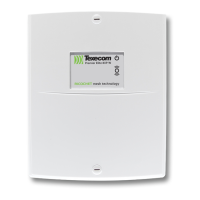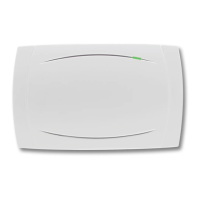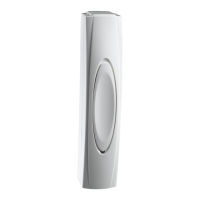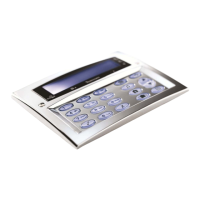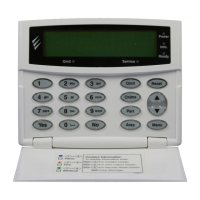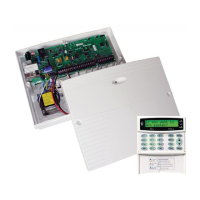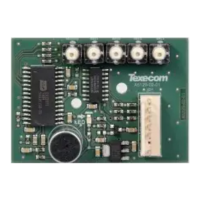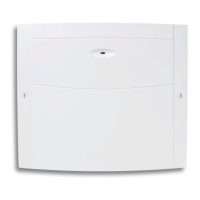These timers control various timing and delay functions. Each timer
can be programmed for any value between 000 and 999.
0 - Exit Settle Time
When using the ‘Entry/Exit’ or ‘Exit Terminator’ arming mode, some
detectors along the exit route can remain active for a number of
seconds following activation. This timer ensures that the detectors are
given time to deactivate before the system/area arms.
1 - Global Bell Dly.
This timer controls the delay between an Intruder
alarm occurring and the ‘Bell/Strobe’ output activating.
2 - Global Bell Dur.
This timer controls the duration of the ‘Bell’ output after an alarm has
occurred and any programmed ‘Global Bell Delay’ time has expired.
3 - Double Knock Dly
If a zone has the ‘Double Knock’ attribute an alarm will only occur if the
zone activates twice within this time window or once for the duration of this
time window.
If multi knocks has been set up (see page 74 for details) the
zone may have to be activated more than twice.
4 - Beam Pair Time
If a zone has the ‘Beam Pair’ attribute, an alarm will only occur if
another zone with the ‘Beam Pair’ attribute (assigned to the same
area) is activated within this time window.
5 - Activity Delay
If a zone has the ‘Activity’ attribute and it is not activated during this timer
and ‘Config. option 14’ has been set to ‘View Act. Fault’ (see page 71 for
details), it will be indicated to the user when they try to arm the
system/area.
6 - Abort Delay
When an Intruder alarm occurs this timer is started, if the area is
disarmed within this time window an ‘Abort’ event will be reported to
the Alarm Receiving Centre. If the system is disarmed after this
period the ‘Abort’ event is not reported.
7 - Courtesy Time
This timer controls the duration of the ‘Courtesy’ output type. The
courtesy output activates whenever a keypad is being used and during
the entry mode.
8 - Defer Arming By
If an area tries to ‘Time Arm’ and a valid User code is entered, this timer
is started and the ‘Time Arming’ procedure is postponed. When this
timer expires, the system/area will try to arm itself again.
9 - Auto Arm Delay
When an area assigned to ‘Auto Arm Areas’ is disarmed (see page 66 for
details) this timer is started. Every time a detector in that area is activated,
the timer is restarted. If the timer is allowed to expire i.e. no detectors in
the assigned area are activated, the area will arm itself.
10 - Menu Time Out
This timer controls the length of time that a user can remain in a
menu before the system automatically returns to the normal day
mode.
11 - Pulse Period 1
This timer controls how long any output with the
‘Pulse Period 1’ attribute assigned to it will activate for.
12 - Pulse Period 2
This timer controls how long any output with the
‘Pulse Period 2’ attribute assigned to it will activate for.
13 - Pulse Period 3
This timer controls how long any output with the
‘Pulse Period 3’ attribute assigned to it will activate for.
14 - ATS Fault Delay
This timer controls the delay between a line fault occurring and an
audible indication being generated by the system.
15 - AC Off Delay
This timer controls the delay between an AC Mains failure occurring
and an audible indication being generated by the
16 - Batt Test Period
This timer controls the frequency of the dynamic battery test.
17 - Batt Test Time
This timer controls how long the dynamic battery test is carried out
for.
18 - Soak Test Time
This timer controls the number of days a zone with the ‘Test’ attribute
will remain on test for.
19 - Service Interval
This timer controls the frequency of the ‘Service Required’ condition
occurring.
20 - Test Call Every
This timer controls how often a test call is made to the monitoring
station. 024 = daily etc.
21 - Min. Random Time
This timer controls the minimum length of time
that the ‘Random’ output attribute will activate for.
22 - Max. Random Time
This timer controls the maximum length of time that the ‘Random’
output attribute will activate for.
23 - Door Strike Time
This timer controls the length of time that the ‘Door Strike’ output will
activate for whenever a code with the ‘Door Strike’ attribute is
entered.
24 - Zone Response
This timer controls the length of time that a zone with the ‘Quick
Resp.’ attribute, has to be activated for, in order to be recognised by
the control panel.
25 - Keypad PA Delay
When keypad ‘option 6’ is programmed as ‘PA Delayed’ (see page
80 for details), and a keypad PA alarm (1 & 3) is activated, this timer
starts. If a User code is entered before this timer expires, no PA alarm
will occur. However, if a User code is not entered before this timer
expires, a PA alarm will occur.
26 - Confirmation Dly
When an Intruder alarm occurs, this timer starts. If a second
(different) zone is activated within this time window, the ‘Confirmed’
output will activate. When this timer expires, the ‘Confirmed’ output
will no longer activate.

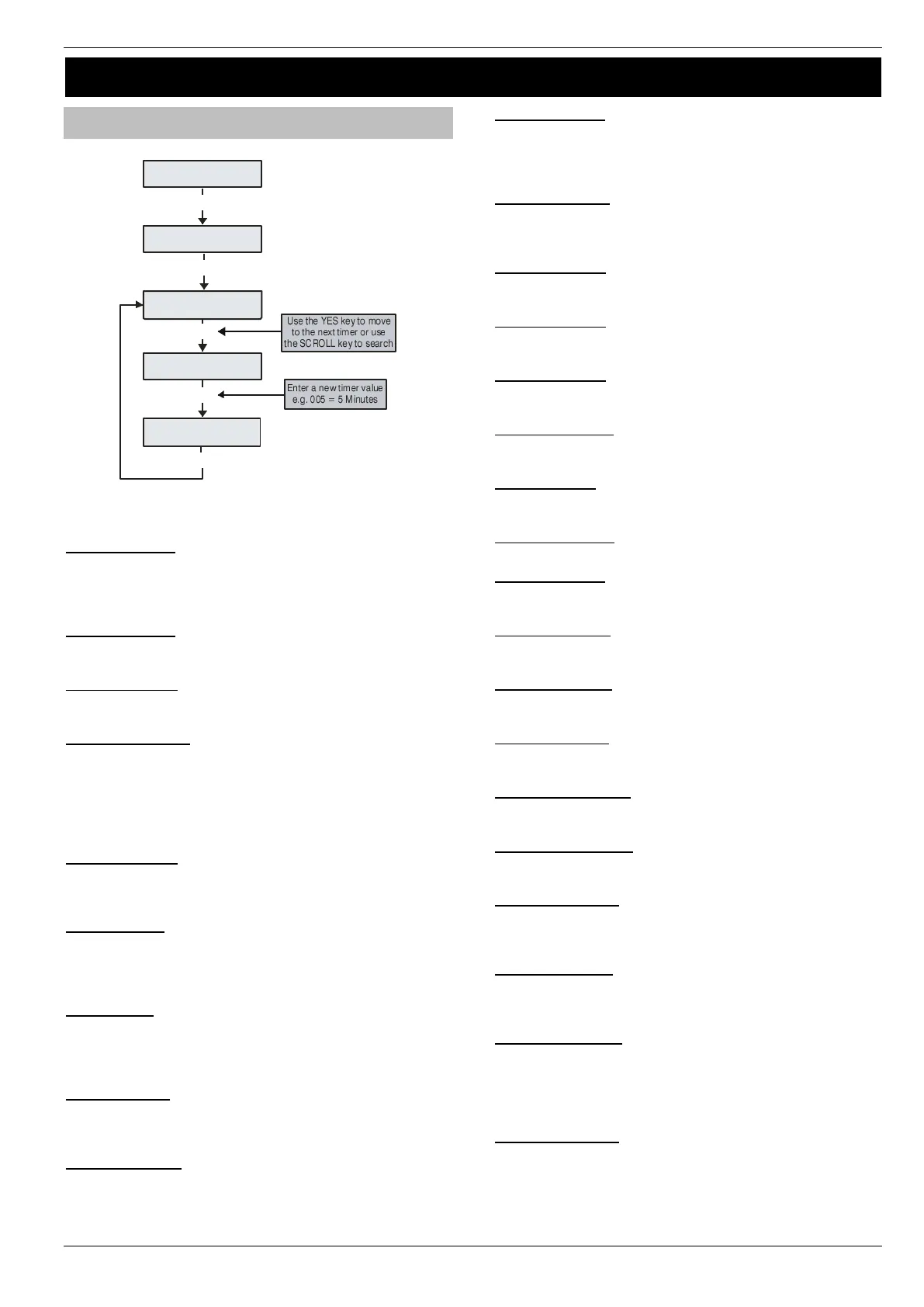